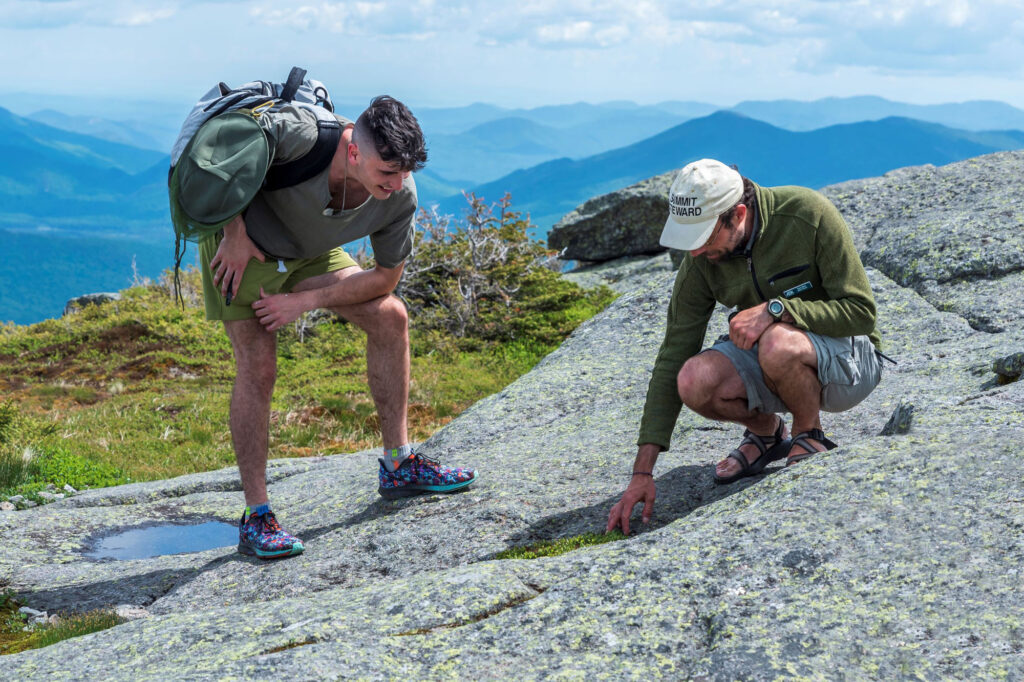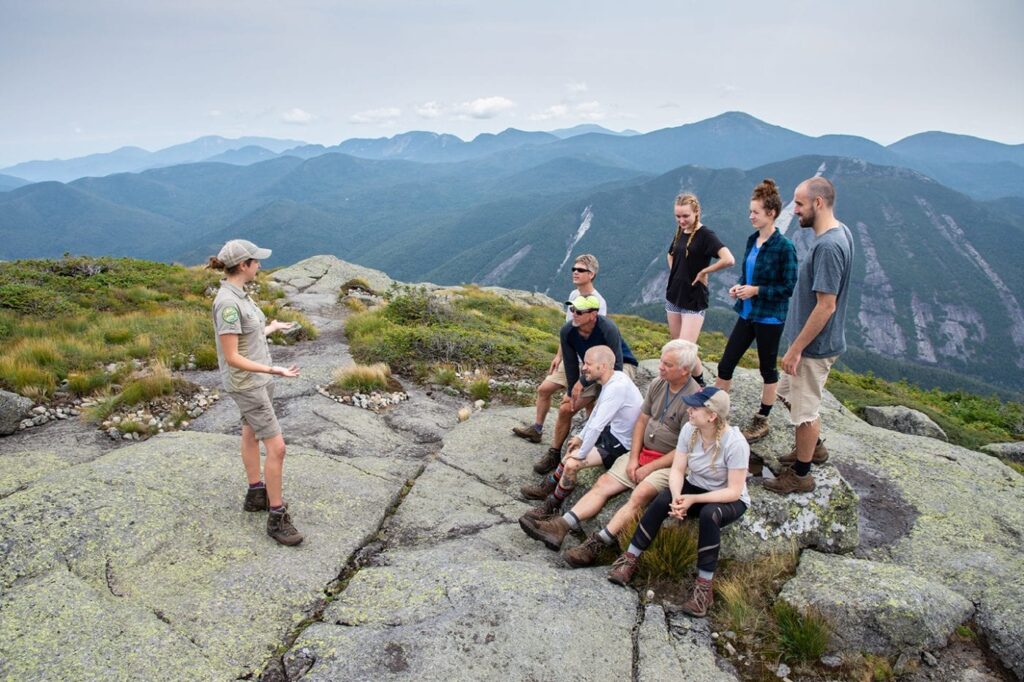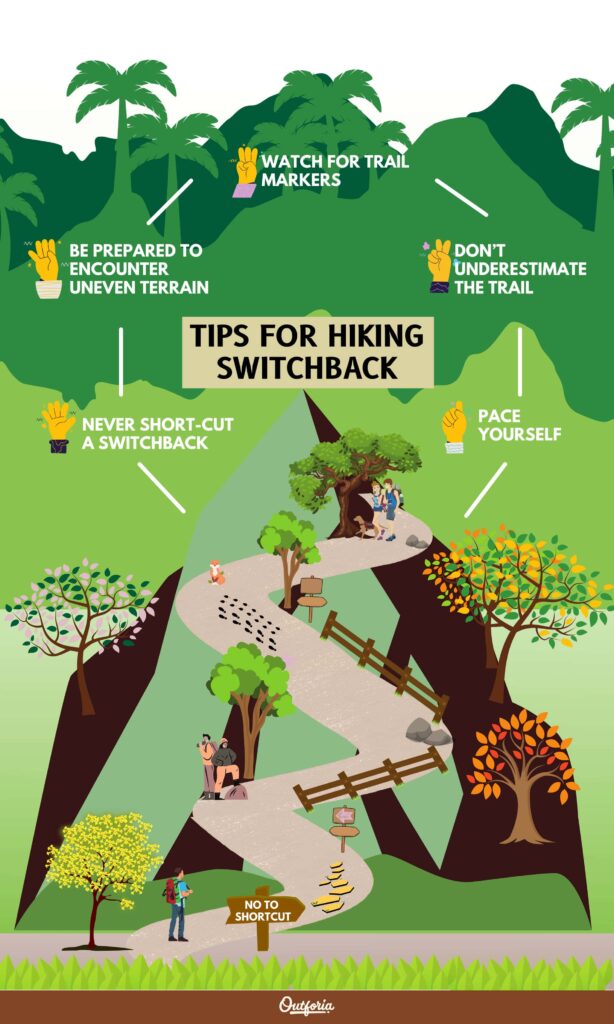Many potential solutions are often discussed for the challenges associated with high use facing the Adirondacks today including hiking permits to limit the number of users of public lands, parking permits, park management, and hiker education. On this page we will focus on the details of two successful and important tools to mitigate the effects of high use: education and sustainable trail building.
Education
Educating the public is often identified as an important component of maintaining trails and conserving fragile high peaks habitats. The Summit Stewardship Program is a strong example of an initiative spearheading this issue.

The Summit Stewardship Program is an essential element of the educational efforts to conserve the Adirondacks. The program was developed as a collaboration between The Nature Conservancy, the Adirondack Mountain Club, and the New York State Department of Environmental Conservation in December of 1989. In the 30 years leading up to the club’s creation there was a dramatic increase in visitors to the high peaks. The high alpine habitat is very fragile and the unusual summit soil cannot be recreated, thus there is no viable solution to replacing the lost soil mantle as it was damaged by hikers. The goals of the Summit Stewardship Program were to stabilize the alpine habitat, educate users about the fragile habitat and manage high use areas with seasonal stewards. Between 1990 and 1995 summit stewards primarily worked on the highly trafficked high peaks of Marcy, Algonquin, Wright, and Colden. In addition to hiker education, the summit stewards program also sponsored trail maintenance and stabilization efforts on the summits (Redmond).

Summit steward talking to a group of hikers on a high peak
The Summit Steward Programs remains today continuing the conservation efforts laid out over 30 years ago. Today the roles of a summit steward include mountain top education, hands-on conservation and scientific research. The main role of summit stewards is to educate hikers about the fragile alpine ecosystem and to encourage visitors to do the “rock walk”; only walk on rock surfaces to avoid damaging fragile plant life. When they are not busy promoting the rock walk, summit stewards are also responsible for ensuring that trails above the tree line are well marked and maintained. Summit Stewards also contribute important research to monitor conservation in the state of New York. Every three to five years summit stewards conduct photo point monitoring to determine the recovery rates of alpine vegetation (Adirondack Mountain Club).
Sustainable Trail Development

The development of more sustainable trails is another important solution to correct years of trail damage due to overuse. Proper trail design contributes more to the longevity of trails than reducing overuse, thus there exists a strong argument that instead of turning toward solutions used in other overused national parks like hiking permits, conservationists should prioritize sustainable trail development.
Sustainable trail design includes practices in construction that control hiker safety, prevent soil loss from anticipated traffic, facilitate water drainage and minimize the need for repair. Well built trails deteriorate minimally over time, effectively mitigate and manage problems associated with high use, and provide sensitive alpine vegetation with time to recover from trampling.
Principles of Good Design:
- Routing through Soils Resistant to Erosion
- Side Hill Trails: Trails should zig-zag up the mountain (i.e. switchback trails). Steep, straight trails channel snowmelt and are more susceptible to erosion.
- Proper Water Drainage: Hikers are more likely to hike off the trail to avoid muddy puddles and cause further damage to vegetation and soil erosion. Wood or stone barriers on the sides of side-hill trails can effectively direct water away from the trail, maintaining the trail and limiting erosion caused by hikers to the trail itself.
- Hardening with Crushed Gravel: Mixing native soils with crushed gravel increases their resistance to erosion

Image Sources:
Image 1: The Adirondack Mountain Club
Image 2: https://www.adirondackexplorer.org/news_releases/summit-stewardship-milestone
Image 3: https://www.adirondackalmanack.com/2021/09/funding-for-sustainable-adirondack-trails-is-needed.html
Image 4: https://outforia.com/what-is-a-switchback/